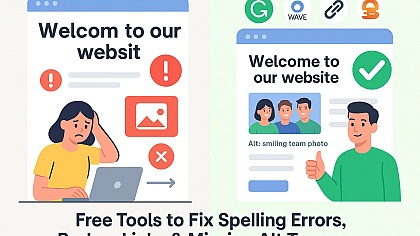
What is the Deep Web, the darkest side of the Internet?
What is the Deep Web, and how do you enter the Deep Web? When we talk about the internet, we usually define it as a network of networks. That is computers and servers that are connected throughout the world. Some of these servers are easily accessible thanks to search engines, which index their pages and content.
Other of these servers, on the other hand, remain somewhat more hidden because search engines are not interested in them or because their creators block search engines for various reasons. This group includes what is known as the Deep Web.
Technically, what we call the Deep Web or deep Internet is basically all that online content that is not indexed in Internet search engines like Google, Bing, Baidu, Yahoo!, or Yandex, to name the five major search engines in the world. We can also call the Deep Web the invisible internet or the hidden internet.
On this dark side of the Internet, we find private pages, databases, and normal and current pages deindexed from Google or other search engines on purpose... However, certain media and self-proclaimed experts have spoken of the Deep Web as something dark and full of illegal things or dangerous stuff. In fact, many people confuse the Deep Web with the Dark Web.
If you want to buy weapons, medicines, or drugs, or even hire hitmen or hackers, on the Dark Web, you will find all this and much more. It is in the Dark Web where everything on the internet that should not be online comes together because it goes against the laws of dozens of countries around the world. For this reason, its access is more complicated and is based on darknets that, on many occasions, require a prior invitation. However, the Deep Web is not as exotic as it is made out to be.
What is the Deep Web?
The concept was born in 2001. It was coined by the expert Michael Bergman when talking about how we access the Internet through search engines. Search engines index content, and this content appears on the results pages when you search for something on Google or the like. Everything that is not in Google will hardly be visible to the majority of Internet users since the search engine is our gateway to the web.
And if we update the definition of the Deep Web to the present, in addition to search engines, social networks also play an important role. Anything that is not on Facebook, Instagram, or TikTok will be more difficult to find. All in all, there are several ways to get into the Deep Web.
Some websites decide to block Google's indexing. Others simply have not been found, so they will not appear in search engines, no matter what you are looking for. You will only be able to access the content that falls on the Deep Web if you know the exact address. Sometimes they don't even have a domain name and are limited to an IP address. On the Deep Web, we find personal pages for their use, private areas of business pages, and private websites of organizations or institutions... The list is extensive.
In summary, the content that is part of the Deep Web can be divided into two:
• That content that you can access simply by indicating your domain name or IP address, but that does not appear in search engines.
• That content is inaccessible because, in addition to being unindexed from search engines, it is blocked with a username and password: bank accounts, private profiles on social networks, emails, medical databases, and legal documentation... Trying to access this content could be considered an illegal activity and/or illegal, so it is not always possible to answer how to enter the Deep Web.
Not to be confused with the Dark Web
Do not confuse the Deep Web with the Dark Web. It is a separate case. Due to its illegal and criminal nature, accessing the latter is somewhat more complicated, since it moves parallel to the internet we all have access to. Using their own networks known as darknets, technologies such as Tor or Freenet allow the creation of content that is hidden from traditional browsers and that is only accessible with specific software.
I will not expand on this article about the Dark Web. Its bad reputation precedes it. Although there is everything beyond illegal or reprehensible content. Be that as it may, the Dark Web stands out for the use of anonymity and precaution, while you can find pages, forums, and content that could be a reason for crime, such as illegal supermarkets or stores that buy and sell malware or infected computers.
The problem we often run into is the fine line between the Deep Web and the Dark Web. Part of what we consider to be the Deep Web seeks anonymity and privacy to avoid censorship or persecution by dictatorial governments or those with undemocratic attitudes. Hence, through Tor, you will be able to know how to enter the Deep Web, but also the Dark Web.
How to Enter the Deep Web
Now that we know what the Deep Web is, the answer to how to enter the Deep Web answers itself. That is, to access this type of content or websites, it is enough to have a normal web browser, the same one you use to read this article or to search in the aforementioned search engines. The problem is knowing what content is part of the Deep Web.
On the other hand, a certain percentage of the Deep Web is only accessible using Tor-compatible browsers, such as Tor Browser, based on Firefox, or Brave, which integrates Tor. These browsers serve both to access the traditional web and Tor .onion links.
From here, how to find Deep Web content? A good starting point is The Hidden Wiki, a page that collects .onion links associated with the Deep Web. There you will find search engines, cryptocurrency markets, hosting for websites or images, forums, messaging, or anonymous email services.
However, when finding Deep Web link sources, we inevitably come across Dark Web content. In the case at hand, The Hidden Wiki also links to forums and online drug stores or illegal medicines in many countries.
Another compilation of links is the Deep Web Links website. Shows search engines, recommends Tor-compatible web browsers, indexes .onion pages to host content or send and receive an email, anonymous social networks, forums, Bitcoin-related content, and directories, among others.
Although the official Tor search engine is DuckDuckGo, if you need to find websites with .onion links, there are better options, such as Not Evil or Ahmia, both of which are accessible from Tor-compatible browsers.
Finally, it is worth remembering that to access certain content on the Deep Web, it is advisable to take precautions. The same ones that we take when entering web pages that we do not know for the first time, and some more, such as not providing personal information in any form, forum, or chat, avoiding opening downloaded files without having analyzed them before, etc.
















